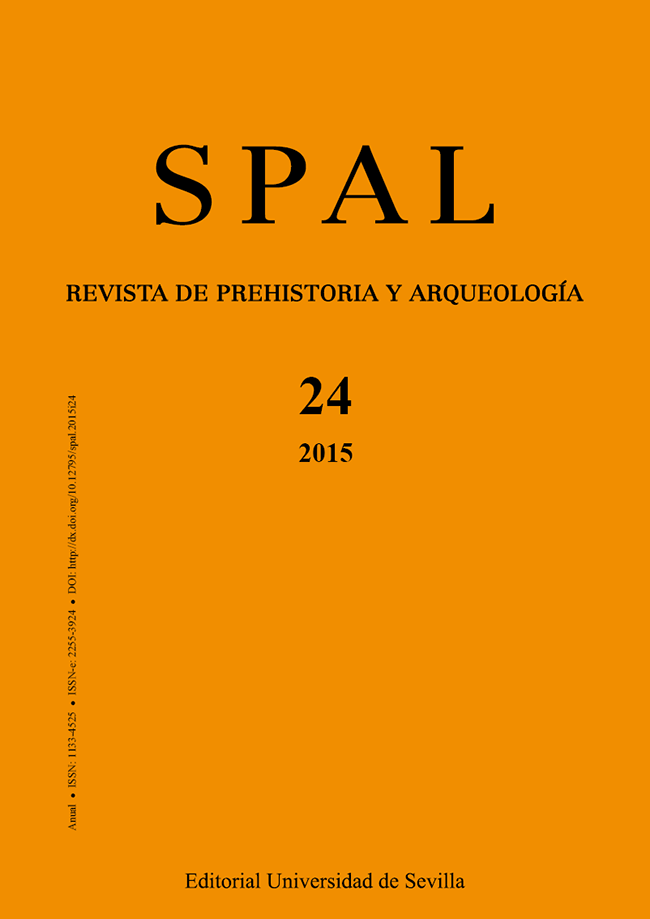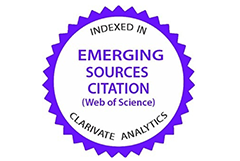Daniel García Rivero. Arquelogía y Evolución. A la búsqueda de filogenias culturales
DOI:
https://doi.org/10.12795/spal.2015i24.11Resumen
Daniel García Rivero. Arquelogía y Evolución. A la búsqueda de filogenias culturales. Universidad de Sevilla. Secretariado de Publicaciones, 2013.
Descargas
Citas
Atteson, K. (1999): “The Performance of Neighbor-Joining Methods of Phylogenetic Reconstruction”. Algorithmica 25: 251–278.
Boyd, R y Richerson, P. J. (1995): Culture and the Evolutionary Process. Chicago, IL, University of Chicago Press.
Boyd, R.; Richerson, P.J.; Borgerhoff-Mulder, M y Durham, W. H. (1997): “Are Cultural Phylogenies Possible?”, en P. Weingart, P.J. Richerson, S.D. Mitchell y S. Maasen (eds.), Human by Nature, Between Biology and the Social Sciences: 355–38. Mahwah, NJ, Lawrence Erlbaum Associates.
Buchanan, B y Collard, M. (2008): “Phenetics, cladistics, and the search for the Alaskan ancestors of the Paleoindians: a reassessment of relationships among the Clovis, Nenana, and Denali archaeological complexes”. Journal of Archaeological Science 35: 1683-1694.
Cavalli-Sforza, L. L y Feldman, M. W. (1981): Cultural Transmission and Evolution: A
Quantitative Approach. Princeton, Princeton University Press.
Durham, W.H. (1992): Coevolution: Genes, Culture, and Human Diversity. Stanford University Prints.
Felsestein, J. (2004): Inferring phylogenies. Sinauer Associates,. Inc. Massachusetts.
García Rivero, D. (2010): “Introducción a la teoría de la clasificación y de las escuelas taxonómicas (Fenética, Cladística y Taxonomía evolutiva)”, en J.L. Escacena, D. García Rivero y F.J. García Fernández (Coords.), Clasificación y Arqueología: Enfoques y métodos taxonómicos a la luz de la evolución darwiniana: 61-93. Sevilla, Universidad de Sevilla.
Guglielmino, C.R.; Viganotti, C.; Hewlett, B y Cavalli-Sforza, L.L. (1995): “Cultural variation in Africa: role of mechanisms of transmission and adaptation”. PNAS 92 (16): 7585-7589.
Martínez, S. y Olivé, L. (1997): Epistemología evolucionista. Instituto de Investigaciones Filosóficas, UNAM. México, Editorial Paidós.
Mesoudi, A. (2007): “Biological and cultural evolution: Similar but different”. Biological Theory 2(2): 119-123.
Neiman, F. (1995): “Stylistic Variation in Evolutionary Perspective: Inferences from Decorative Diversity and Interassemblage Distance in Illinois Woodland Ceramic Assemblages”. American Antiquity 60(1): 7-36.
Nunn, C. L. (2011): The Comparative Approach in Evolutionary Anthropology and Biology. Chicago, University of Chicago Press.
Mihaescu, R.; Levy, D. y Pachter. L. (2009): “Why Neighbor-Joining Works”. Algorithmica (2), 54: 1–24.
O’Brien, M. y Lyman, R. (2003): Cladistics and Archaeology. Salt Lake City, University of Utah Press.
Rohlf, F.J.; Chang, W.S.; Sokal, R.R. y Kim, J. (1990): “Accuracy of estimated phylogenies: effects of tree topology and evolutionary model”. Evolution 39: 40-59.
Saitou, N. y Nei, M. (1987): “The neighbor-joining method: a new method for reconstructing phylogenetic trees”. Molecular Biology and Evolution 4 (4): 406-425.
Shennan, S.J. (2000): “Population, culture history and the dynamics of culture change”. Current Anthropology 41: 811-835.
Scheinsohn, V. (2009): “Evolución en la Periferia. El caso de la Arqueología evolutiva en Argentina”, en M. Cardillo y G. López (eds.), Teoría, métodos y casos de análisis en arqueología evolutiva: 73-86. Buenos Aires, Editorial “sb”.









